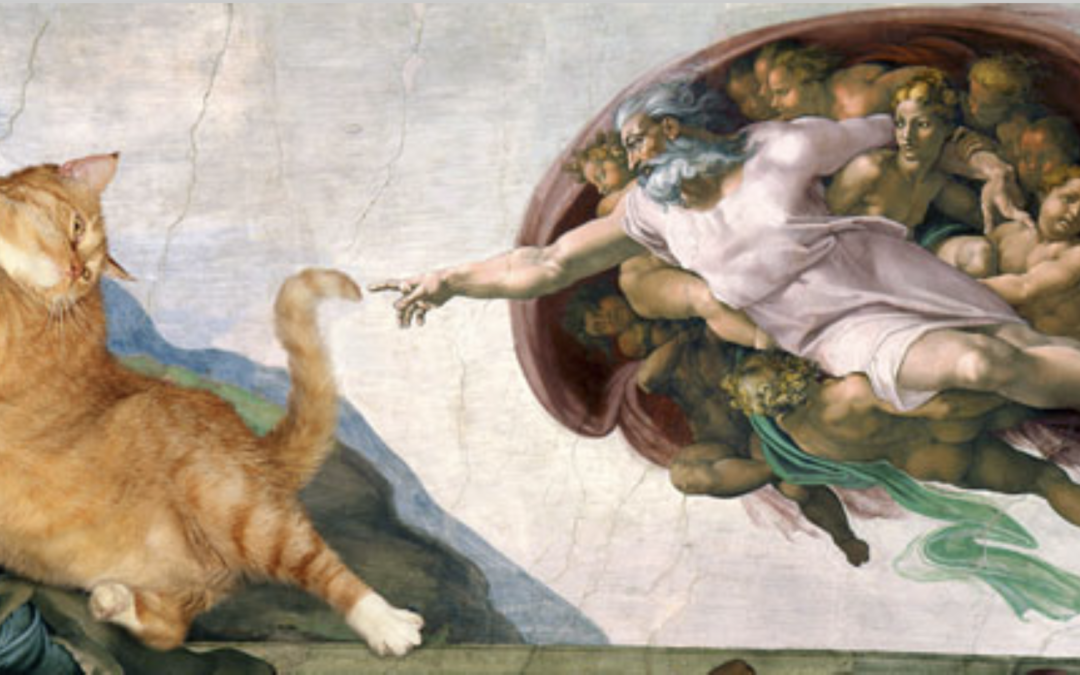Check out the Historia Artis Student Symposium, April 20 from 1 to 4 p.m. in room 114 of Jack Arends Hall (Art Building).
Schedule
1:00 p.m.: Opening Remarks, Historia Artis President, Markie Striegel
1:10 p.m.: Parting Words for Graduating Students, Art History Department Faculty
1:25 p.m.: Alexandra Heller, Practical Magic: An Analysis of Voodoo Dolls in the Ancient Mediterranean
1:50 p.m.: Markie Striegel, Luntaya Acheik: Unravelling a Definitive Burmese Textile
2:15 p.m.: Amanda Spradling, Buddhism from East to West: The Symbol of the Bodhi Tree from Ancient India and Southeast Asia to the Contemporary United States
2:40 p.m.: Carmin Berchiolly, Capturing Burma: Reactivating Colonial Photographic Images Through the British Raj’s Gaze
3:05 p.m.: Sarah Sabo, The Renegade’s Running Stitch: Affective Labor and Embodiment in the Embroidered Paintings of Ghada Amer
3:30 p.m.: Allison Sutton, The Weaker Sex? Gibson Girls, Gibson Men, and Gender
3:55 p.m.: Closing Remarks
Abstracts
Practical Magic: An Analysis of Voodoo Dolls in the Ancient Mediterranean — Alexandra Heller
Although commonly associated with the Haitian culture, the practice commonly known as voodoo can be found all over the world. By examining both literary and archaeological evidence, this paper investigates how this ritual was utilized in the ancient Mediterranean world, and seeks to understand why this practice was believed to hold such power.
Luntaya Acheik: Unravelling a Definitive Burmese Textile — Markie Striegel
Textiles play a vital role in defining individual and group cultural identity in Southeast Asia, particularly in the country of Myanmar where around 135 different ethnic groups reside. While there has been significant research performed on certain cultural aspects of the country, scholarship has merely scratched the surface on textile studies. This paper explores a specific textile known as luntaya acheik, characterized by its horizontal, wave-like design on silk. Prevalent among Burmese textiles since the time of it’s last monarch, luntaya acheik is a beautiful, complex weave found solely on skirt cloths. Over time, the pattern became a definitive icon of Burmese fashion. I examine not only the techniques, materials, and use of luntaya acheik on textiles, but also the industry tasked with producing such an in demand pattern. Further, this research analyzes the history of Myanmar, from the Konbaung Period to present, to gain insight into luntaya acheik’s origin as well as an explanation for how and why it became so popular, despite both its complexity and the decline in handwoven textiles within recent years. By drawing upon first-person interviews in addition to secondary sources, this research delves beyond the threads of luntaya acheik to discover the human aspect of textile production by looking at those behind the loom.
Buddhism from East to West: The Symbol of the Bodhi Tree from Ancient India and Southeast Asia to the Contemporary United States — Amanda Spradling
The symbol of the Bodhi tree, the particular species of tree the Buddha sat beneath at the moment of his enlightenment, has been a part of Buddhist visual culture since its earliest permanent structures in the first centuries CE, and continues to pervade Buddhist and popular culture today. Representations of the Bodhi tree are typically naturalistic, and the close-to-life appearance of its iconic heart-shaped leaves quickly signifies to worshippers this is the Bodhi tree under which the Buddha attained enlightenment. Despite the ubiquity of this symbol, studies related to the Bodhi tree focus on the lineage of the physical tree and not its artistic rendering. Through the method of semiotic analysis, an approach that unpacks the multivalent meaning of the signs and symbols of our everyday lives, this paper traces depictions of the Bodhi tree in Buddhist art and compares its meaning to mythical trees of the Abrahamic religions. I will argue that the effort shown in careful depictions of the Bodhi tree’s recognizable leaves serve as markers of place, symbolizing the spread of Buddhism across the world. This includes its application in the United States where the symbol of the Bodhi tree is used in the marketing of American business, which includes bookstores, coffee shops and restaurants. In contrast, trees in the Abrahamic religions tend to act as liminal spaces that separate the sacred and profane, ultimately separating god and man or immortals and mortals.
Capturing Burma: Reactivating Colonial Photographic Images Through the British Raj’s Gaze — Carmin Berchiolly
This study explores the marginally studied topic of Burmese photography from the colonial period of the late nineteenth and early twentieth centuries. With a large emphasis on the oeuvres of the foreign photographers Felice Beato (1832 – 1909), Philipp Adolphe Klier (1845 – 1911), and D.A. Ahuja (? – ?), this study analyzes how visual representations of Burma’s people were fabricated, mass-produced, and contextualized by foreign audiences to provide additional justification for the colonial mission. By combining Edward Said’s concept of orientalism with Laura Mulvey’s concept of the gaze, this study considers how the British empire looked upon and created a visual corpus of Burmese women and men as “the Other”. This study argues that the creatio and treatment of Burma’s visual milieu was fully informed by an orientalizing gaze that simultaneously commodified and fetishized the native population. Further, this study applies Roland Barthes’s concept of the myth and his semiological system to analyze and contextualize contemporary use of colonial images in “pop culture” merchandise created by foreign-owned businesses established in Myanmar in recent years. Additionally, this study contributes new findings based on archival and art historical research that helps clarify and establish a clearer biographical timeline for the photographers studied.
The Renegade’s Running Stitch: Affective Labor and Embodiment in the Embroidered Paintings of Ghada Amer — Sarah Sabo
Ghada Amer’s canvasses proclaim their feminist affiliation. Her large, colorful, densely-threaded surfaces depict women appropriated from the pages of pornographic magazines. When these pornographic works are coupled with an early, formative quadriptych entitled Cinq Femmes au Travail, which depicts women performing various reproductive tasks, they offer compelling support for a materialist analysis. While much of the feminist interpretation of Amer’s work focuses on representation, I argue that, through a comparison of these works, Amer can be seen to criticize post-structural divisions of labor associated with writers like Hardt and Negri (2000) and Weeks (2007). Seen in this way, her work more closely aligns with material feminists such as Schultz (2006), McRobbie (2011), and Oksala (2016). Amer accomplishes this visually by activating binary relationships where differing permutations and intersections signal gendered affiliations. Additionally, this paper will demonstrate how the employment and subsequent dissolution of these binaries ultimately leads to a discussion of affective labor and embodiment.
The Weaker Sex? Gibson Girls, Gibson Men, and Gender — Allison Sutton
“The Weaker Sex? Gibson Girls, Gibson Men, and Gender” is a thesis that will seek to uncover the gender dynamics of Charles Dana Gibson’s wildly popular “Gibson Girl” illustrations. “The Weaker Sex?” discusses the phenomenon of the Gibson Girl, her role as early feminist icon, and the status of the New Woman in Gilded Age society. How the role of women changed during the period is reflected in the illustrations and this thesis seeks to examine how gender roles and dynamics changed along with them



